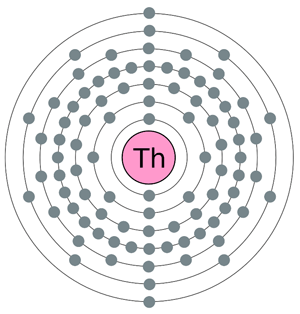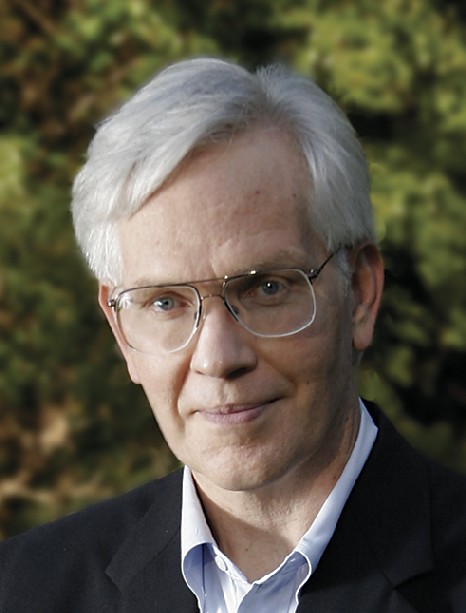Key words :
future energies,
nuclear power
,breeder reactor
,molten salt reactor
,nuclear proliferation
,thorium
Is Thorium an Energy Alchemist's Dream?
27 Mar, 2009 02:20 pm
Advocates say that already existing thorium fuel and reactor technology could provide centuries and perhaps millennia of safe, abundant nuclear power. Are they right?
 |
Their work revealed that nuclear fuels could be multiplied through a process called breeding in which nonfissile elements--ones not subject to nuclear fission--such as thorium-232 and uranium-238 are deliberately introduced into a reactor. Their bombardment with particles emitted by fissile elements such as uranium-235 and plutonium-239 turns them into fissile fuels--ones capable of being split--such as uranium-233 (from thorium-232) and plutonium-239 (from uranium-238). (The splitting, of course, is what results in such a huge release of energy. The controlled version is a nuclear reactor while the uncontrolled version is, as most people know, a nuclear bomb.)
Breeding would be unimportant were it not for the fact that uranium contains only about 0.7 percent uranium-235, the only naturally occurring fissile fuel. It takes a lot of work and energy to enrich uranium to the point where it contains enough uranium-235 to be useful for a nuclear reactor. And, the rarity of uranium-235 calls into question the longevity of the world's uranium fuel supply.
Thorium by contrast appears to be far more abundant than uranium, perhaps three times more abundant than all isotopes of uranium combined. And, it is theoretically possible to turn all of the available thorium into fissile material meaning the total supply on any human time scale is vast.
Besides availability, thorium has three additional distinct advantages over uranium fuel. First, thorium fuel elements can be designed in a way that make it difficult to recover the fissile uranium produced by breeding for bomb making. This reduces the likelihood of nuclear weapons spreading to nonnuclear nations that adopt thorium-based fuel technologies.
Second, the waste stream can be considerably smaller since unlike current reactors which often use only about 2 percent of the available fuel, thorium-fueled reactors with optimal designs could burn nearly all of the fuel. This is the main reason besides its sheer natural abundance that thorium could provide such long-lived supplies of fuel for nuclear power.
Third, the danger from the waste of the thorium fuel cycle is potentially far less long-lived. The claim is that the reprocessed waste will be no more radioactive than thorium ore after about 300 years. This claim is based on the idea that virtually all of the long-lived radioactive products of breeding will be consumed in the reactor before the final round of reprocessing takes place.
So, with all these advantages, what is holding back development of thorium-based fuels? First, most commercial reactors run on uranium. Thorium fuels have been used in some commercial reactors with success. But no fuel-producing infrastructure yet exists for supplying thorium commercially, and so it remains for more economical and reliable to use uranium. (One small company has been trying to change that with limited success.)
Second, the advantages of thorium come from the reprocessing and extraction of the uranium-233 produced by breeding. This reprocessing has proven challenging because of the highly radioactive byproducts produced during breeding and the resulting high costs associated with processing fuel and building fuel assemblies.
There are also practical hurdles for reprocessing solid fuel. But advocates of the so-called molten salt reactor claim that this design lessens the problem of reprocessing since the products of breeding can be continuously extracted and processed from the molten liquid stream inside a closed fuel cycle. They also claim that the design is far less prone to accidents which might release radioactive materials into the environment. None of this, of course, solves the problems of existing reactors that use solid fuel assemblies. But it does suggest a plausible course for vastly expanding nuclear power generation with little worry about fuel supplies and fewer concerns about nuclear weapons proliferation.
The end of the fossil fuel era is coming sooner than most people believe as exponentially increasing fossil fuel consumption brings us ever closer to the day when production will peak for oil, natural gas and coal and then begin irrevocable declines. The only options left for powering a modern technical society will then be solar, wind, tidal, hydroelectric, geothermal and nuclear. And of these, only nuclear can conceivably be located wherever it is needed at the scale required.
The main concern about these replacements is whether they can be built fast enough to head off an overall reduction in the amount of energy available to society. A second concern is the size of the footprint for renewables such as solar and wind, footprints which are orders of magnitude greater than what we are used to with fossil fuel power generation.
Given the history of the nuclear industry I have my doubts whether much will be done to maintain, let alone increase, the share of power generation that nuclear now supplies. Still, the possibility of a vastly expanded and viable long-term nuclear industry seems now to lie with thorium and the small band of advocates who are making the case for its use.
-
12/12/12
Peak Oil is Nonsense Because Theres Enough Gas to Last 250 Years.
-
05/09/12
Threat of Population Surge to "10 Billion" Espoused in London Theatre.
-
05/09/12
Current Commentary: Energy from Nuclear Fusion Realities, Prospects and Fantasies?
-
04/05/12
The Oil Industry's Deceitful Promise of American Energy Independence
-
14/02/12
Shaky Foundations for Offshore Wind Farms







 Read more
Read more
it states in part: "The Thorium Energy Independence and Security Act of 2008 would establish offices at the Nuclear Regulatory Commission and the Department of Energy to regulate domestic thorium nuclear power generation and oversee possible demonstrations of thorium nuclear fuel assemblies."
This legislation needs support, perhaps a grass roots campaign by bloggers to encourage citizens to contact their Senators is needed.
At 7 barrels per tonne, and 42GJ per tonne of oil, and 86400 seconds per day, this amounts to a power dissipation of about 5000GW. That's thermal; to get the electric (which is how power plants are usually accounted), divide by about 3.
A couple of thousand nuclear power plants is a big job, but hardly unachievable. Once the manufacturing pipeline begins, though, we can expect accelerations in terms of time and cost reductions.